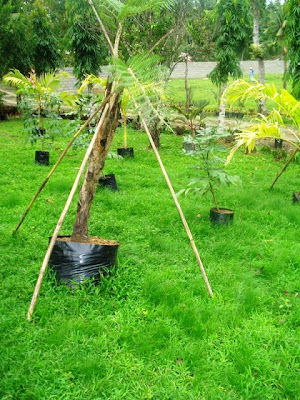This chronicle of events transpiring in the farm may only be five months old but the farm has been the scene of a very busy year especially when we decided to begin with our plans to improve its state and condition.
Our triumphs and successes may be summarized into several bullet points:
- we have begun to collect and propagate plants for future landscaping projects.
- increased farm size by legally acquiring adjacent lots.
- the fencing of the sides and rear perimeters.
- the front has been secured by constructing an 8-foot high concrete wall.
- initial steps have been made leading to the future construction of the dirt road within the farm.
- increase in number of some farm animals through acquisitions, births and government grants.
- some other little triumphs that helped to bolster our spirits.
- some plant casualties due to several reasons (nature and man-made alike).
- work stoppage due to unavoidable reasons like typhoons and other natural causes.
- work slowdown due to human causes like budget constraints, labor shortage, etc.
- vehicle problems brought by mechanical age.
- decrease in number of some farm animals due to several causes.
- some other head-scratching problems that kept us entertained, amused and confused.
There is one dreaded and unavoidable major problem looming in the horizon... dwindling finances.
Happy new year to us all!!!



























